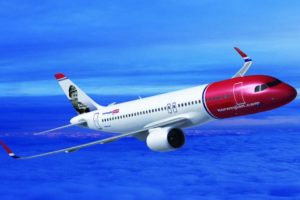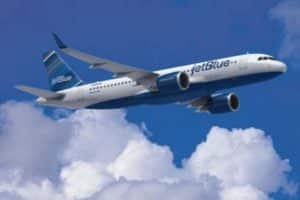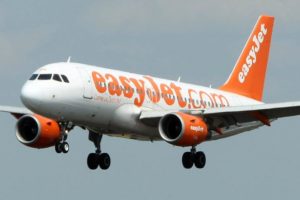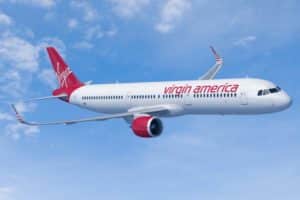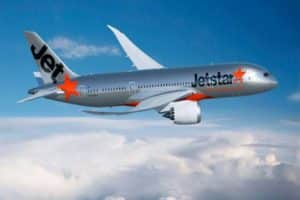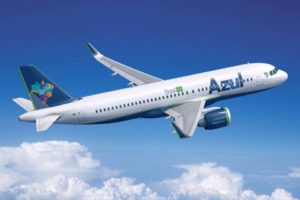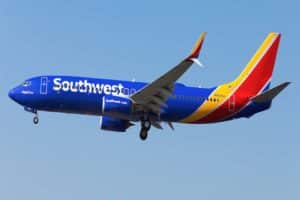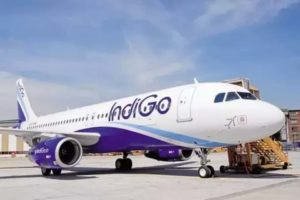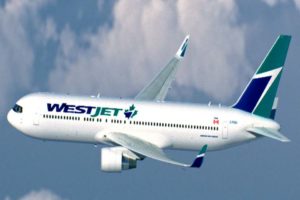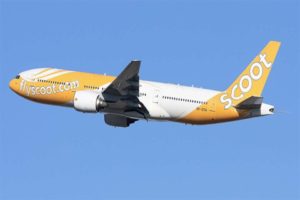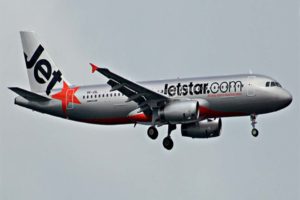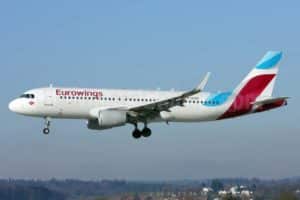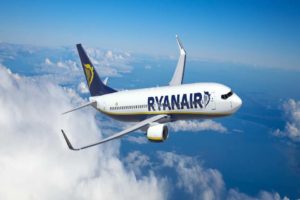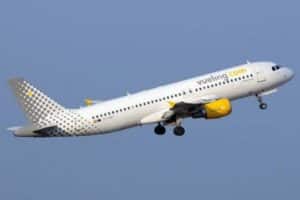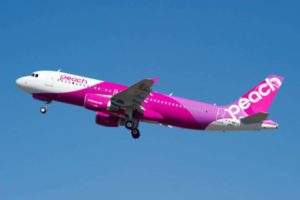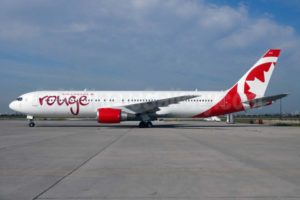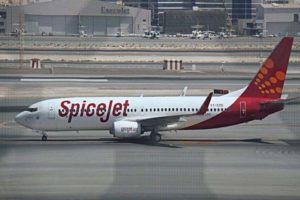Aviation
Top 20 World’s Best Low-Cost Airlines 2017

1. AIRASIA, MALAYSIA
Impressively, AirAsia is the world’s best low-cost airline for the 9th year running. Based in Kuala Lumpur, Malaysia, the airline operates an extensive network covering more than 120 destinations in 26 countries across Asia, Australia and New Zealand, the Middle East and the USA. Just 15 years ago, the airline was a failing state-owned business but was rapidly turned around by CEO Tony Fernandes.
2. NORWEGIAN AIR, NORWAY
Also voted best long-haul low-cost airline and best low-cost airline in Europe, Norwegian Air comes in second on this list. The company flies to more than 100 destinations throughout Europe, Asia, Africa, the Middle East and the USA – making headlines earlier this year when it offered one-way flights between Dublin and New York for just $90 (£69). Its planes are instantly recognizable as they each have a red nose and portraits of famous Scandinavians on their tail fins.
3. JETBLUE AIRWAYS, USA
“You above all” is the reassuring slogan of JetBlue Airways, credited with raising the standards of low-cost carriers in the US thanks to its friendly-service, satellite TV and free snacks. With headquarters in New York, the carrier has routes to 102 destinations across North, Central and South America. The company recently announced plans to remove its schedules from 11 online travel sites to encourage direct bookings, thereby cutting the commission it pays to third parties.
4. EASYJET, UK
No-frills British airline easyJet burst onto the scene in 1995, launched by self-titled ‘serial entrepreneur’ Stelios Haji-Ioannou. It’s now the second-largest airline in Europe by number of passengers, behind Ryanair, carrying around 73 million people annually. EasyJet flies to more than 100 destinations throughout Europe and North Africa.
5. VIRGIN AMERICA, USA
Virgin America prides itself on offering a top-notch service at an affordable price. Even passengers in the main cabin can expect mood lighting, snacks, power outlets, wi-fi, leather seats and video touchscreens in every seatback. Those flying in Select and First Class have more legroom and premium meals. Virgin America flies to 21 destinations across the US, plus three in Mexico.
6. JETSTAR AIRWAYS, AUSTRALIA
Jetstar Airways is based in Melbourne and promotes itself as “Australia’s No. 1 Low Fares Airline”. Founded in 2004, the company flies to destinations throughout Australia and New Zealand and also has routes to China, Japan, Vietnam, the US, Thailand, Malaysia, Fiji, Indonesia and the Cook Islands. Jetstar Airways is wholly owned by Qantas Airways, which offers a more premium service.
7. AIRASIAX, MALAYSIA
Long-haul and low-cost carrier AirAsiaX has flown over 19 million passengers since it launched its maiden flight 10 years ago. It currently serves 23 destinations across Asia, Australia, New Zealand, the Middle East and Africa. Earlier this year, founder Tony Fernandes ended speculation that the airline would return to Europe and start flying to the US, confirming the company will remain focused on Asia only.
8. AZUL LINHAS AÉREAS BRASILEIRAS, BRAZIL
Azul Linhas Aéreas Brasileiras is the latest success of co-founder David Neelemen, who also helped build JetBlue and WestJet. Founded in 2008, the São Paulo-based budget airline’s success is largely down to the fact it began by targeting under-served cities throughout Brazil. Its fleet of 125 jets now fly to more than 100 destinations throughout Argentina, Bolivia, French Guiana, Portugal, the USA, and Uruguay.
9. SOUTHWEST AIRLINES, USA
The world’s largest low-cost carrier, Southwest Airlines has more than 700 Boeing 737 jets and operates more than 4,000 flights a day in peak season. The Dallas-based airline flies to around 100 destinations across the US, South America and the Caribbean.
10. INDIGO, INDIA
New Dehli-based IndiGo is the largest airline in India in terms of passengers carried – a total of 41 million people last year. One of the fastest-growing aviation companies in Asia, it’s about to add another 400 Airbus jets to its current fleet of 100. IndiGo flies to 46 destinations, most of which are domestic, but also airports in Nepal, Oman, Qatar, Singapore and Thailand, along with Dubai and Sharjah in the United Arab Emirates.
11. WESTJET, CANADA
Launched in 1996, WestJet was originally a small regional airline but has grown to become the second-largest carrier in Canada. The cost-conscious company now flies to more than 100 destinations throughout Canada, Central America, Mexico, Europe and the Caribbean – and plans to expand into Asia and South America in the next few years.
12. SCOOT, SINGAPORE
Owned by Singapore Airlines, Scoot was launched in 2012. The company offers a no-frills, low-cost service alongside business class ‘ScootBiz’, which offers extra legroom and larger, leather seats. Scoot operates services in Singapore, Honolulu, China, Malaysia and the Gold Coast of Australia.
13. JETSTAR ASIA, SINGAPORE
Jetstar Asia, an off-shoot of Jetstar Airways, flew into the skies in 2004. A latecomer to the budget aviation market, the business differentiated itself from other airlines by traveling within a five-hour radius of Singapore, while its competitors didn’t go beyond four hours. Jetstar Asia travels to around 100 destinations across India, China, Malaysia, Thailand, Singapore, Cambodia, New Zealand and Australia.
14. EUROWINGS, GERMANY
Low-cost carrier Eurowings flies to more than 150 destinations throughout Europe as well as Thailand and South Africa. The company offers passengers three fare options for both short and long-haul flights: Basic (flight only), Smart (preferred seating, food and luggage included) and Best (premium seating and legroom, à la carte catering and in-flight entertainment). Its parent company, Lufthansa, recently bought over 81 of Air Berlin’s plane, increasing the Eurowings fleet to 210 aircraft.
15. RYANAIR, IRELAND
Dublin-based Ryanair is Europe’s largest airline in terms of passenger numbers. The company serves 34 countries throughout the continent as well as Morocco and Israel. The budget airline made the list despite cancelling thousands of flights this summer after a ‘mess-up’ in how it scheduled time off for pilots. Customer satisfaction improved from 2014 when Ryanair allowed customers two free carry-on bags. But, from January 2018, passengers will be charged for the privilege.
16. VUELING AIRLINES, SPAIN
Spain’s second-largest carrier, Vueling flies to over 160 destinations throughout Europe, Africa and Asia. The company, based in Barcelona, offers three fares: Basic, Optima (allocated seating and check-in luggage) and Excellence (front row, allocated seating, priority boarding, larger luggage allowance). The airline flew 2 million passengers in the UK during the summer 2017, an 8% increase from the summer season of 2016.
17. TIGERAIR, SINGAPORE
Tigerair Singapore merged with Scoot in July 2017 and now operates under that name, but before all this it was voted the 17th best low-cost airline in the world. The economy service continues to operate flights throughout southeast Asia, Bangladesh, China and India. (This entry does not refer to Tigerair Australia, which is a different operation entirely.)
18. PEACH, JAPAN
Japanese airline Peach operates 14 domestic routes and flies to 15 international destinations across Hong Kong, China, Thailand, Taiwan and South Korea. Passengers can chose between three fares: Simple, Value and Prime, with the more expensive options offering allocated seats, additional legroom and bigger luggage allowances.
19. AIR CANADA ROUGE, CANADA
A low-cost subsidiary of Air Canada, Air Canada Rouge began operating in 2013 with just four aircraft. The company now has 49 planes and flies to more than 90 popular destinations throughout Canada, Europe, the Caribbean, South America and the USA. The airline is currently in the process of adding high-speed wi-fi to its entire fleet. All Airbus 319s will be equipped by spring, followed by its Airbus 321s and Boeing 767s later in 2018.
20. SPICEJET, INDIA
In 2014, Indian airline SpiceJet was about to fold – and was even forced to cancel 2,000 flights because it couldn’t afford to pay for oil. Its fortunes changed when chairman Ajay Singh took over and it’s now the third-largest carrier in the country. SpiceJet now operates more than 300 flights to 55 destinations throughout India, China, Thailand, Saudi Arabia, the United Arab Emirates, Afghanistan, Nepal and Sri Lanka.

Aviation
All passengers killed in plane crash, after pilot let his children to control the plane

When boarding a plane, passengers entrust their safety to the skilled hands of the pilot. However, tragedy struck when one of the flight ended in disaster as all passengers lost their lives in a horrific plane crash.
In 1994, during a flight from Moscow to Hong Kong, tragedy struck as an Aeroflot relief pilot made a fateful decision. In a move that would have devastating consequences, the pilot invited his own children into the cockpit to play with the controls. Little did anyone know, this seemingly innocent gesture would lead to the loss of all 75 lives aboard the aircraft.
It was a seemingly innocent act that led to catastrophic results. The relief pilot, Mr. Kudrinsky, invited his two children, Yana, 12, and Eldar, 15, into the cockpit during the late hours of the night. Little did anyone know, this simple gesture would set off a chain of events that would end in tragedy.
Once in the cockpit, the children were allowed to sit in the captain’s chair and play with the controls, unaware that they should have been disabled as the plane was in autopilot mode.
Eldar, perhaps in a moment of curiosity or innocence, held the control column down for a mere 30 seconds. Yet, in those brief moments, the autopilot disengaged, thrusting the aircraft into manual control.
By the time the pilots regained their seats and attempted to regain control, it was too late. Despite their efforts to pull the plane out of a dive, they overcorrected, causing the flight to climb almost vertically, ultimately stalling it.
Final moment Flight 593 crash
In the final moments, as the pilots struggled to stabilize the aircraft, Flight 593 crashed into the Kuznetsk Alatau Mountain range in southern Russia, completely obliterating the plane and claiming the lives of everyone on board.
Investigations revealed a chilling truth: there was no evidence of technical failure. Instead, the crash was attributed to the unthinkable decision to allow inexperienced hands to manipulate the controls of a commercial aircraft.
The black box recording captured the harrowing sequence of events, providing a grim reminder of the human cost of a lapse in judgment. In just over two minutes, the lives of all on board were tragically short, leaving behind a legacy of sorrow and unanswered questions.
Aviation
American Airlines Flight Attendant Orders First-Class Traveler to use Economy Restroom
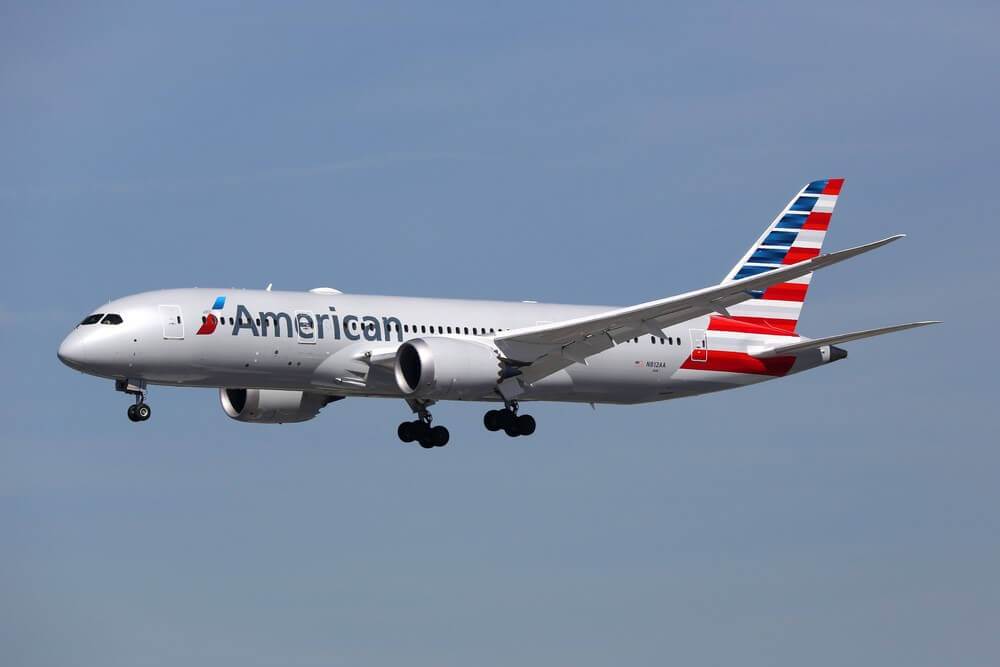
On a recent American Airlines flight from Chicago O’Hare to Phoenix, Pamela Hill-Veal, a retired circuit court judge, found herself at the center of a disturbing incident.
Despite traveling in First Class, she was directed by a flight attendant to use the Economy Class restroom, sparking allegations of racial discrimination. According to Hill-Veal, the ordeal began when she used the dedicated First Class lavatory during the flight. A flight attendant approached her, accusing her of slamming the door and issued a warning.
Despite remaining calm, Hill-Veal faced further confrontation when she attempted to use the First Class restroom again later in the flight. The situation escalated as the flight attendant persisted in berating Hill-Veal, who felt targeted due to her race. She highlighted the disparate treatment, noting that white passengers were not subjected to similar directives.
In a distressing turn, the flight attendant followed Hill-Veal to her seat and allegedly touched her while threatening arrest upon landing. This alarming encounter left Hill-Veal feeling humiliated and traumatized, impacting her ability to rest even after the flight.
American Airlines has responded, expressing a commitment to investigating the matter and addressing discrimination claims seriously. However, the incident underscores ongoing concerns about racial bias in air travel and the need for accountability in ensuring all passengers are treated with dignity and respect.
Aviation
Southwest CEO Signals Major Shift: Farewell to Open Seating
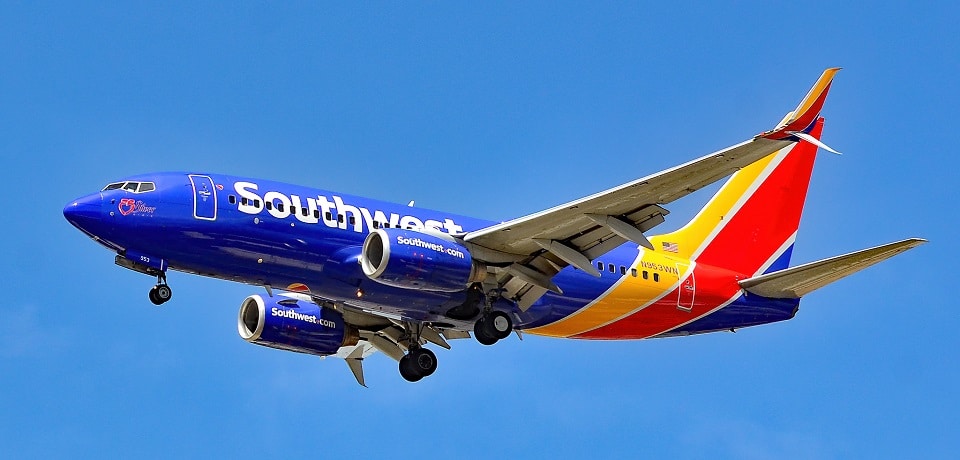
Southwest Airlines is contemplating a significant shift away from its traditional open seating policy, a move that could signal a departure from its long-standing business model.
The potential change, which would introduce assigned seating and premium seat options, is being considered to appeal to a younger demographic of travelers. This adjustment would mark one of the most substantial alterations for the carrier since its inception in 1971.
Unlike its competitors who have embraced premium seating offerings, Southwest has stuck to its open seating approach, albeit providing the option for early boarding at a fee. However, with rivals like United Airlines witnessing revenue growth from premium seating, Southwest is reevaluating its strategy. According to Forbes, the airline industry has seen a shift in customer preferences over time, prompting Southwest to reconsider its seating model designed during an era of lower load factors.
While Southwest CEO, Jordan,told to CNBC that he has neither confirmed nor denied the possibility of premium seating, he acknowledges that the company is exploring various options. He emphasized that while it’s still early in the decision-making process, the initial results are promising, hinting at potential changes in the future.
Southwest currently operates with a single economy class cabin across its all-Boeing 737 fleet, with no assigned seating. However, the airline does offer the option for early boarding for passengers to secure their preferred seats for an additional fee. Over the years, Southwest has maintained a focus on simplicity and user-friendliness in its offerings, striving to minimize costs and complexity.
In contrast, competitors like Delta and United have capitalized on revenue growth from premium seating options such as business class, demonstrating strong upsell rates. Analysts have repeatedly questioned Southwest about the potential for introducing premium seating or additional fees, although the airline has traditionally refrained from charging for the first two checked bags.
For now, the only way Southwest passengers can secure their preferred seats is by paying for an earlier boarding position, as the airline continues to operate without assigned seating, allowing passengers to choose their seats upon boarding in a predetermined order.


